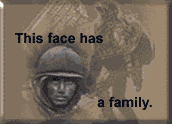Background Information
In Vietnam, military experts devised a system to try to
relieve the battle fatigue experienced in earlier wars by those who served long
tours with their units intact. In Vietnam, soldiers were rotated after
roughly one-year tours. The practice had noble intent, but it served to
isolate the soldier and interrupted continuity. Virtually as soon as a man
learned the ropes, he was shipped home and a green replacement arrived to
fill the gap. Some were quite literally, in the jungles one day and at home the
next. The emotional impact was terrific and thousands of veterans are dealing
with it two decades later.
Vietnam was also a limited political war, and had peculiar problems: a
vague enemy, restrictive rules of engagement, an uncertain objective,
non-military State Department minds directing many aspects of the war. In
certain periods of the war, military morale was lower than perhaps any
other time in our history.
Adding to these factors was the extremely young age of the average soldier
shipped to Vietnam. For example, the average combatant's age in World War
II was 25 years, while Vietnam soldiers were 19. The young fighters became
jaded -- or old -- or died -- long before their time.
For various reasons, some soldiers deserted or even defected to the enemy.
Their counterparts in the U.S. fled to Canada, manufactured physical or
mental problems, or extended college careers to escape the draft.
There are only a handful of American deserters or AWOL (Absent Without
Leave) maintained on missing lists. At least one of these was known to
have fallen in love with a woman whom he later learned was a communist.
Another fled because he had scrapped with a superior and feared the
consequences. This man was ultimately declared dead, and his AWOL record
expunged.
There is little information regarding those listed as AWOL on the missing
lists. For instance, SP4 Quinten E. Mulleavey disappeared on January 29,
1968. Through the years since then, Mulleavey's name has appeared and
disappeared from U.S. Government missing lists. At times, he is listed as
AWOL, others not. U.S. Army records as of 1988 indicate his status is
AWOL. Details concerning his disappearance are not public information.
Without this information, it is impossible to know if Mulleavey deserted.
Some of the reports among the over 10,000 received relating to Americans
missing or prisoner in Southeast Asia have to do with deserters, although
there is no evidence they have been asked if they want to come home. In
light of the amnesty granted draft dodgers by the United States
Government, can we be less forgiving of them?
ADDENDUM:
National Alliance Of Families
For The Return Of America's Missing Servicemen
World War II - Korea - Cold War - VietNam
Dolores Alfond - VOICE/FAX 206-881-1499
Lynn O'Shea ---- VOICE/FAX 718-846-4350
BITS 'N' PIECES January 27, 1996
On April 3rd 1968 Quinten Mulleavy of the United States Army disappeared. His
name does not appear on the MIA/POW list dated October 11, 1979. Nor does it appear
on the chronological list dated April 1980. His name does appear on the Brightlights
list, dated April 1988, withthe case number 2057. (Note: this case number was
assigned out of sequence. It was not assigned at the time of loss, but well after
the war ended, probably in the late 1980's) The description following his name
reads "Missing (W)." Translation: "Carried by service as dead but
JCRC analysis indicates individual to have been a defector/collaborator, now carried
as dead."
Let's see if JTF-FA (formerly JCRC) can explain this.
Message Traffic 200315Z JUL 92 (July 20 1992 3:15 A.M.) "Subj: Summary Report
of 18th Joint Field Activity in VietNam 19 JUN-18 JUL 92." Page 21 Item E:
"CASE 2057: on 14 and 15 Jul 92, IE3 interview two witnesses who provided
information germane to Case 2057. The interviews were conducted in my Duc Village
People's Committee house, Phu My District. The witnesses provided corroborating
firsthand testimony regarding the capture and death and subsequent burial of an
American serviceman during the dry season of 1967 or 1968. The American was lured
along the beach by the female witness to a village where he was taken into custody.
The American was shot and killed as U.S armored forces approached the area where
he was being held. The witness led the team to the alleged burial site which is
located in a 6X10 meter area of a plowed field. The site will be recommended for
recovery.
Quinten Mulleavy -- poor judgement, probably.... deserter, hardly. Yet, the U.S.
Government carried him in a deserter status until well into into the late 1980's.
|
|
|






![]()
![]() Sign My Guestbook
Sign My Guestbook
![]()